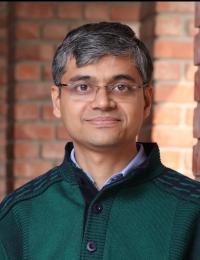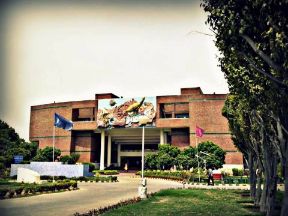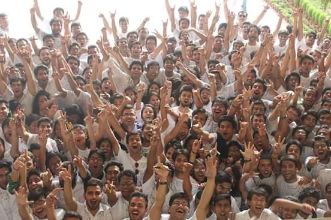
Biosketch
Dr. Gaurav Saini is working as an Associate Professor and Head of Department in the Civil Engineering Department at NSUT WEST CAMPUS, Jaffarpur, New Delhi.
He also hold the charge of Associate Dean (Academics) for NSUT West Campus.
Dr. Saini completed his B.E. (Environmental Engineering) from Delhi College of Engineering (currently Delhi Technological University) in 2003, M.S. and Ph.D. from the Oregon State University, United States in 2006 and 2010, respectively. He worked as a post-doctoral researcher at the University of Delaware, United States for 1.25 years. His research area includes sustainable processes, materials, pollution control, waste management, bioremediation, water and wastewater treatment, surface characterization and modeling. Dr. Saini has more than 15 years of experience in the area of teaching, research, and consultancy. He has guided several research-based projects and dissertations at UG (40+), PG (48), and Ph.D. (4) levels. He has published more than 100 research articles / chapters in refereed international journals, conferences, and books. Dr. Saini also serves as an ad hoc reviewer for 25+ International journals of repute. He is an Editorial Board Member for the prestigious Nature group journal "Scientific Reports". He is also a Life member of the Institution of Engineers, India. His work has resulted in 20 patent filings, of which 15 have already been granted.
Areas of Interest
: Water & wastewater Treatment, sustainable processes, sustainable materials, Air quality & human health, bioremediation, contaminant transport.
- Areas of Interest
-
Water & wastewater Treatment, sustainable processes, sustainable materials, waste management, bioremediation, contaminant transport.
- Publications
-
1. Y.H. Labaran, A.A. Musa, V.S. Mathur, G. Saini, 2024. Exploring the carbon footprint of Nigeria's construction sector: a quantitative insight. Environ Dev Sustain. https://doi.org/10.1007/s10668-024-05111-5
2. S.C. Sapkota, S. Sapkota, G. Saini, 2024. Prediction of split tensile strength of recycled aggregate concrete leveraging explainable hybrid XGB with optimization algorithm. Multiscale and Multidiscip. Model. Exp. and Des. https://doi.org/10.1007/s41939-024-00480-w
3. A.K. Singh, A.K. Pathak, G. Saini, 2024. Premature mortality risk and associated economic loss assessment due to PM2.5 exposure in Delhi, India during 2015–2019. Air Qual. Atmos. Health. https://doi.org/10.1007/s11869-024-01550-1
4. S.I. Abba, MA Yassin, SMH Shah, JC Egbueri, HE Elzain, JC Agbasi, G. Saini, J Usaman, NA Khan, IH Aljundi, 2024. Trace element pollution tracking in the complex multi-aquifer groundwater system of Al-Hassa oasis (Saudi Arabia) using spatial, chemometric and index-based techniques. Environ. Res., 249, 118320. https://doi.org/10.1016/j.envres.2024.118320
5. A. Verma, R. Yalem, G. Saini, 2023. Use of Recycled Aggregates as Filter Support and Filter Media for Decentralized Water Filtration Systems. J. Engg. Res.. Doi: https://doi.org/10.1016/j.jer.2023.10.016
6. G. Saini and B.D. Wood, 2022. Investigating the effects of variability of operational parameters on MATH test for bacterial hydrophobicity measurement. Archives of Microbiology, 204, 707. https://doi.org/10.1007/s00203-022-03327-5
7. A.K. Jha, N.K. Jha, G. Saini, S.K. Jha, S.P. Shukla and R. Mathur, 2022. Epigenetic factors in breast cancer therapy. Frontiers in Genetics. 10.3389/fgene.2022.886487
8. G. Saini and P.S. Deepak, 2021. Wastewater-based epidemiology (WBE) for novel Coronavirus detection in wastewater. Glob. J. Environ. Sci. Mgmt., 7(4): 643-658. https://dx.doi.org/10.22034/GJESM.2021.04.10
9. M. Saleh, P. Esmaili, Z. Ameen, R. Abdulkadir, M.S. Gaya, G. Saini, S.I. Abba, 2021. Metro-environmental data approach for the prediction of chemical oxygen demand in new Nicosia wastewater treatment plant. Desal. Wat. Treat., 221: 31-40. https://doi.org/10.5004/dwt.2021.27049
10. M.I. Adburrahman, S. Chaki and G. Saini, 2020. Stubble burning: Effects on health & environment, regulations and management practices. Env. Adv., 2: 100011. https://doi.org/10.1016/j.envadv.2020.100011



